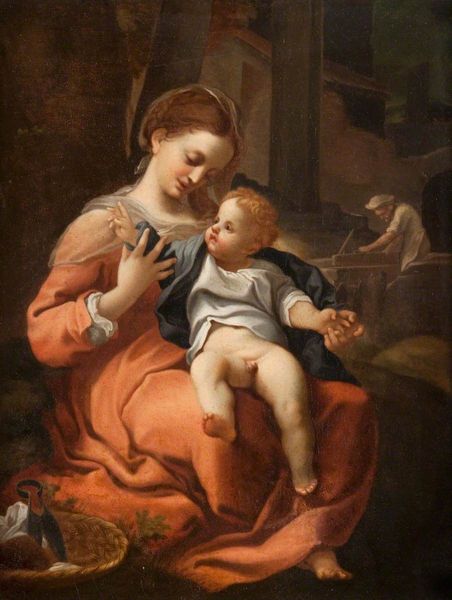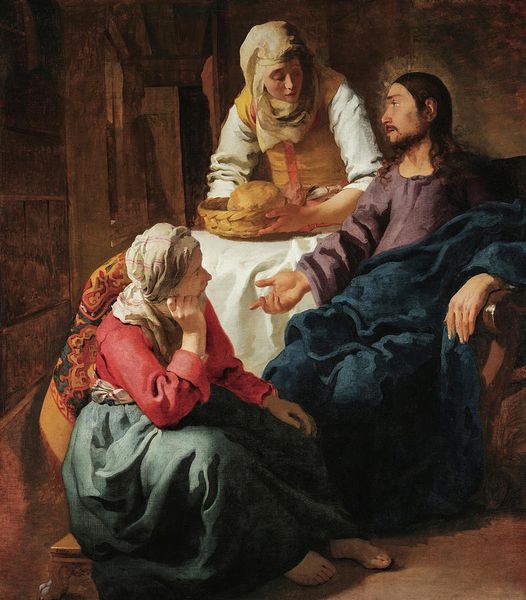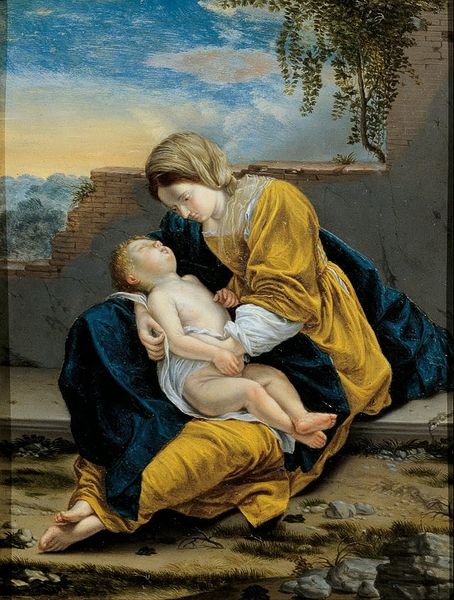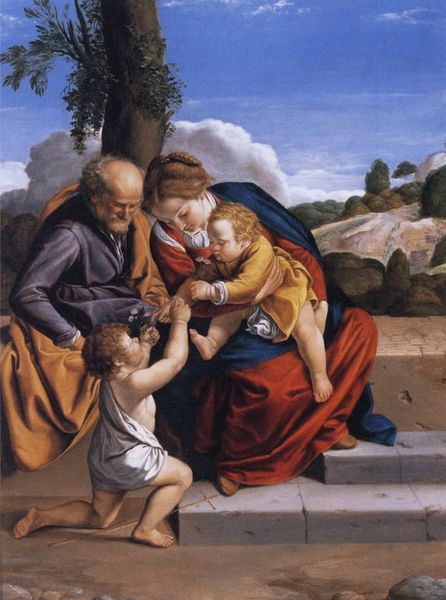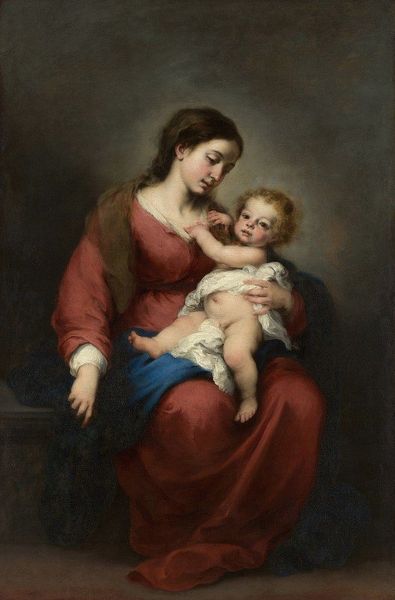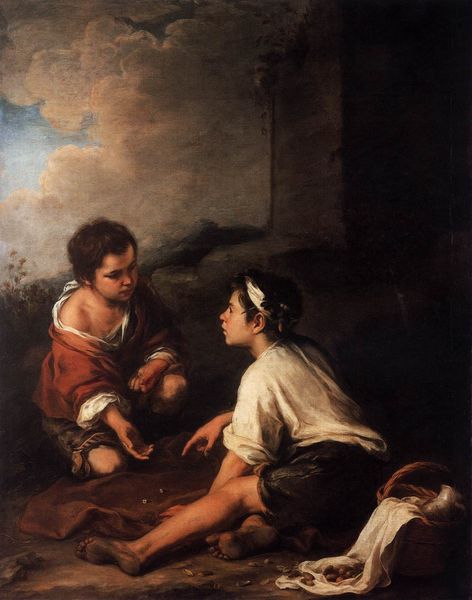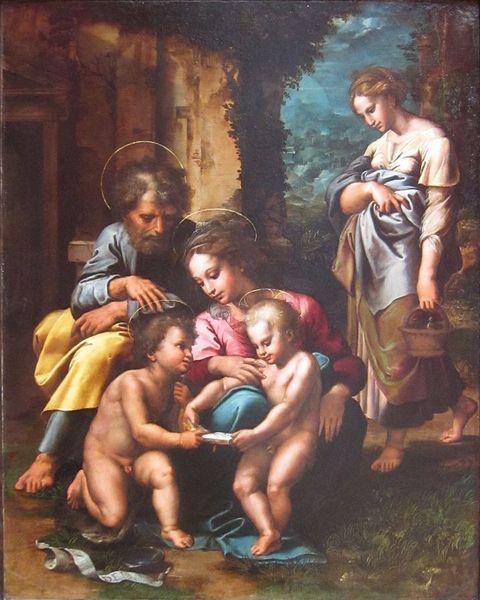
Copyright: Public domain
Ernest Hébert painted "Neapolitan Children" during a time when European artists were fascinated with romanticized views of rural life. The painting depicts two children in what is presumed to be Naples, Italy. The girl, dressed in traditional clothing, sits passively while the boy playfully teases her. Hébert presents a sentimentalized image of childhood and peasant life, carefully constructed for an urban, bourgeois audience. The children are seemingly unaware of the societal gaze upon them, their innocence frozen in time. This image also reflects the power dynamics inherent in the act of looking. It speaks to the exoticization of the ‘other’, where the working class and rural communities are put on display for the consumption and pleasure of the privileged. As viewers, we are implicated in these dynamics. We, too, become spectators in their world. The painting serves as a poignant reminder of the complexities of representation and the narratives we construct about those who are different from ourselves.
Comments
No comments
Be the first to comment and join the conversation on the ultimate creative platform.
